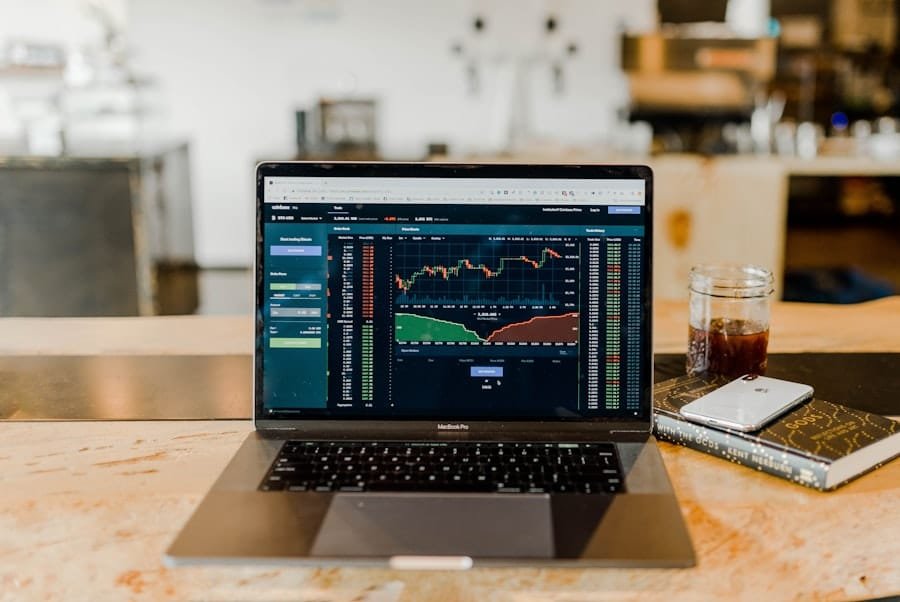Derivatives are financial contracts whose value is derived from the performance of an underlying asset, index, or entity. These underlying elements can include stocks, bonds, commodities, currencies, interest rates, and market indexes. The value of a derivative fluctuates based on the expected future price movements of the underlying asset.
Investors and businesses utilize derivatives for risk management, speculation on price movements, and to gain financial leverage. Derivatives are traded on regulated exchanges or over-the-counter (OTC) markets and come in various forms, including options, futures, forwards, and swaps. In the modern global financial system, derivatives play a crucial role by offering numerous advantages to market participants.
They provide mechanisms for hedging against potential losses, speculating on price movements, and accessing markets that might otherwise be challenging to enter. Additionally, derivatives contribute to market liquidity and aid in the process of price discovery. However, it is important to note that derivatives can be complex financial instruments and may carry substantial risks.
As a result, regulatory bodies have increased their oversight of derivative markets in recent years to ensure market stability and protect investors.
Key Takeaways
- Derivatives are financial instruments whose value is derived from an underlying asset or index.
- Types of derivatives include options, futures, forwards, and swaps, each serving different purposes in the financial market.
- Derivatives are commonly used in hedging to manage risk by offsetting potential losses in the underlying asset.
- Speculative use of derivatives involves taking on risk in the hope of making a profit from price movements in the underlying asset.
- Regulation and oversight of derivatives are important to ensure transparency, stability, and fair practices in the financial market.
Types of Derivatives
There are several types of derivatives, each with its own unique characteristics and uses. Options are one of the most common types of derivatives and give the holder the right, but not the obligation, to buy or sell an underlying asset at a specified price within a certain time frame. Futures contracts, on the other hand, obligate the buyer and seller to purchase or sell the underlying asset at a predetermined price on a future date.
Forwards are similar to futures but are traded over-the-counter and are not standardized like futures contracts. Swaps are another type of derivative that involve the exchange of cash flows between two parties based on predetermined terms. There are several types of swaps, including interest rate swaps, currency swaps, and commodity swaps.
Each type of swap serves a different purpose, such as managing interest rate risk or currency exposure. These various types of derivatives provide investors and businesses with a wide range of tools to manage risk and speculate on price movements in different markets.
The Use of Derivatives in Hedging

One of the primary uses of derivatives is for hedging purposes. Hedging involves using derivatives to offset potential losses from adverse price movements in the underlying asset. For example, a company that relies on a steady supply of a commodity may use futures contracts to lock in a favorable price for that commodity in the future, thereby protecting itself from price fluctuations.
Similarly, investors may use options to hedge their stock portfolios against potential market downturns. Derivatives can also be used to hedge against changes in interest rates, exchange rates, and credit risk. For instance, a company with exposure to foreign exchange risk may use currency forwards or options to hedge against adverse movements in exchange rates.
By using derivatives for hedging, investors and businesses can reduce their exposure to various types of risk and protect themselves from unexpected market movements.
Speculative Use of Derivatives
In addition to hedging, derivatives are also widely used for speculative purposes. Speculators use derivatives to bet on the future price movements of underlying assets in order to generate profits. For example, an investor may purchase call options on a stock if they believe the stock price will rise, or they may sell futures contracts if they expect the price of the underlying asset to fall.
Speculative use of derivatives can provide investors with opportunities to profit from market movements without having to directly own the underlying asset. However, it also carries significant risks, as derivative prices can be highly volatile and unpredictable. Speculative trading in derivatives has been associated with large losses and financial crises in the past, which has led to increased scrutiny and regulation of speculative activities in derivatives markets.
Regulation and Oversight of Derivatives
Due to their complexity and potential for abuse, derivatives markets are subject to extensive regulation and oversight by government agencies and regulatory bodies. In the United States, derivatives trading is regulated by the Commodity Futures Trading Commission (CFTC) and the Securities and Exchange Commission (SEC). These agencies oversee derivatives exchanges, enforce trading rules, and monitor market participants for compliance with regulations.
In addition to government oversight, derivatives markets are also subject to self-regulation by exchanges and clearinghouses. These organizations establish trading rules, set margin requirements, and provide risk management services to market participants. The goal of regulation and oversight in derivatives markets is to promote transparency, protect investors from fraud and manipulation, and ensure the stability of financial markets.
Risks Associated with Derivatives

Counterparty Risk: A Primary Concern
One of the primary risks associated with derivatives is counterparty risk, which arises from the possibility that one party to a derivative contract may default on their obligations. This risk can be mitigated through the use of clearinghouses and margin requirements, but it remains a concern for market participants.
Market Risk: Unpredictable Price Fluctuations
Derivatives also carry market risk, as their prices are influenced by changes in the value of the underlying assets. This means that market participants are exposed to unpredictable price fluctuations, which can result in significant losses.
Leverage: Amplifying Gains and Losses
Additionally, derivatives can be highly leveraged instruments, which means that small price movements in the underlying asset can result in large gains or losses for the derivative holder. This leverage can amplify both potential profits and potential losses, making derivatives a high-risk investment.
The Future of Derivatives in Managing Financial Risk
Despite the risks associated with derivatives, they are likely to continue playing a crucial role in managing financial risk in the future. As global financial markets become increasingly interconnected and complex, the need for effective risk management tools will only grow. Derivatives provide investors and businesses with a wide range of tools to hedge against various types of risk, including interest rate risk, currency risk, commodity price risk, and credit risk.
In recent years, there has been a push towards central clearing of derivatives contracts through clearinghouses, which helps to mitigate counterparty risk and improve market transparency. Additionally, advancements in technology have led to the development of new derivative products and trading platforms that offer greater efficiency and accessibility to market participants. As a result, derivatives are likely to remain an important tool for managing financial risk in the years to come.
In conclusion, derivatives are complex financial instruments that derive their value from an underlying asset or group of assets. They are used for hedging against potential losses, speculating on price movements, and providing leverage. There are several types of derivatives, including options, futures, forwards, and swaps, each with its own unique characteristics and uses.
Derivatives are subject to extensive regulation and oversight by government agencies and regulatory bodies due to their complexity and potential for abuse. While derivatives carry significant risks such as counterparty risk and market risk, they are likely to continue playing a crucial role in managing financial risk in the future due to their ability to provide effective risk management tools for investors and businesses.
If you’re interested in learning more about financial risk management, you may want to check out this article on The Econosphere’s website about the impact of interest rates on derivatives here. It provides valuable insights into how changes in interest rates can affect the value of derivatives and how financial institutions can use these instruments to manage their exposure to interest rate risk.
FAQs
What are derivatives?
Derivatives are financial instruments whose value is derived from the value of an underlying asset, index, or interest rate. Common types of derivatives include futures, options, and swaps.
How do derivatives help in managing financial risk?
Derivatives can be used to hedge against price fluctuations, interest rate changes, and currency exchange rate movements. By using derivatives, businesses and investors can protect themselves from potential losses and stabilize their financial positions.
What are the different types of derivatives used for managing financial risk?
Common types of derivatives used for managing financial risk include futures contracts, options contracts, forward contracts, and swaps. Each type of derivative has its own specific characteristics and is used for different purposes in risk management.
What are the benefits of using derivatives in managing financial risk?
Derivatives provide a way for businesses and investors to mitigate the impact of market volatility, reduce exposure to price fluctuations, and protect against adverse movements in interest rates and exchange rates. This can help to stabilize cash flows and protect the value of assets and investments.
What are the potential risks associated with using derivatives for managing financial risk?
While derivatives can be effective tools for managing financial risk, they also carry their own risks. These include counterparty risk, market risk, liquidity risk, and legal and regulatory risks. It is important for users of derivatives to fully understand these risks and to use derivatives in a prudent and responsible manner.








